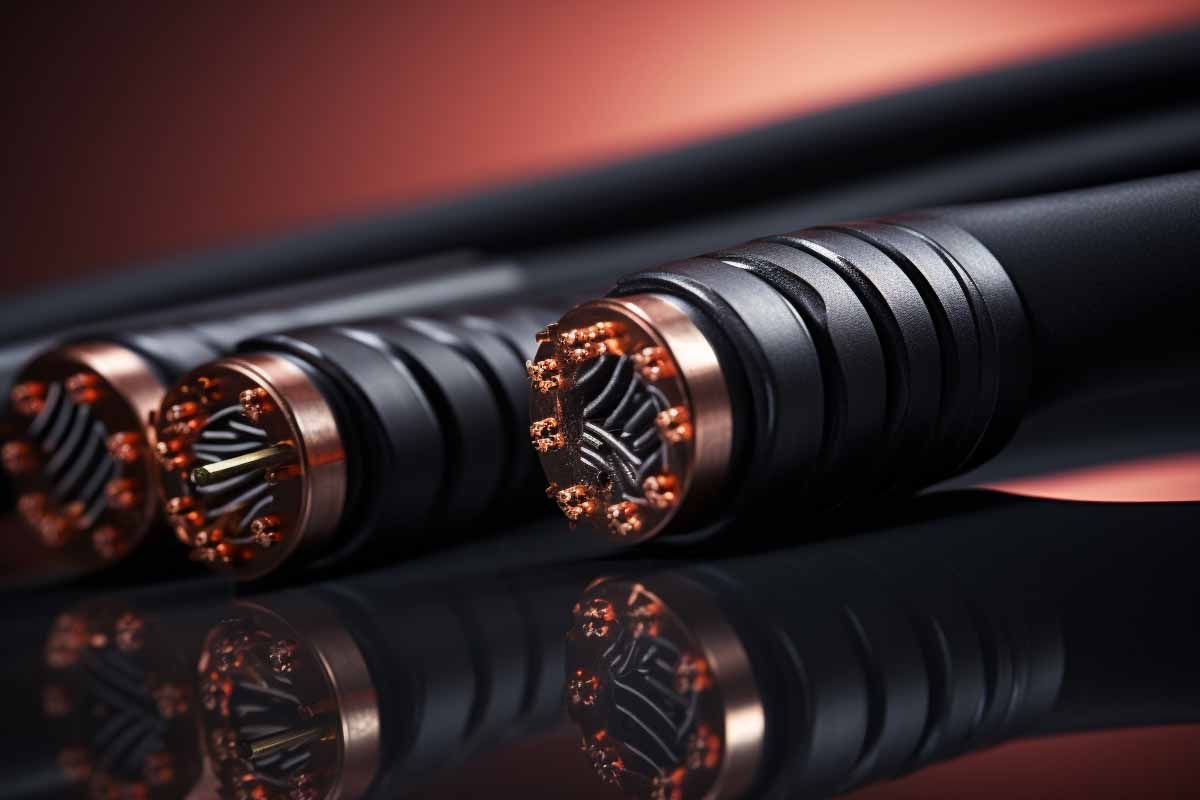In the ever-evolving landscape of networking technology, understanding the foundational elements of network architecture is not just beneficial—it’s essential. One such cornerstone that has stood the test of time is Bus Topology. This blog aims to delve deep into the intricacies of bus topology, exploring its advantages, disadvantages, and its indispensable role in modern networking. With two decades of hands-on experience in network design, implementation, and troubleshooting, I’ve witnessed the transformation of network topologies firsthand. Despite the advent of more complex configurations, the bus topology continues to hold its ground, especially in specific networking scenarios that prioritize cost-effectiveness and simplicity.

What is Network Topology?
Network topology serves as the structural blueprint of any computer network. It outlines how various elements, such as network nodes, switches, and routers, are interconnected. These elements are crucial for data transmission and overall network performance. While there are several types of network topologies like star, ring, and mesh, each with its own set of advantages and disadvantages, bus topology remains a classic choice. It is one of the most straightforward and uncomplicated methods of connecting network nodes, making it an ideal choice for smaller LAN (Local Area Network) setups.
In a bus topology, the Ethernet Bus serves as the central avenue for data packet transmission. All network nodes are connected to this central line, often made of Coaxial Cable, which acts as the network backbone. This setup minimizes the complexity often associated with other topologies and offers a level of network reliability that is sufficient for less demanding applications.

Lock In Our Lowest Price Ever For Only $14.99 Monthly Access
Your career in information technology last for years. Technology changes rapidly. An ITU Online IT Training subscription offers you flexible and affordable IT training. With our IT training at your fingertips, your career opportunities are never ending as you grow your skills.
Plus, start today and get 10 free days with no obligation.
Understanding Bus Topology: The Basics
What is Bus Topology?
Bus topology is one of the earliest and most straightforward forms of network architecture. In a bus topology setup, all devices—be it computers, printers, or other network nodes—are connected to a single, central cable known as the “bus.” This central cable acts as the network backbone, enabling data transmission between network nodes. The simplicity of bus topology makes it a popular choice for smaller networks and legacy systems, where network performance requirements are not exceedingly high.
In bus topology, the data packet travels along the bus and is received by all connected devices, although only the intended recipient processes the data. This method of data transmission is both efficient and straightforward, but it does come with its own set of challenges, such as collision domains where data packets can collide.
Components of Bus Topology
Pivot Table 2:
| Component | Role | Importance |
|---|---|---|
| Ethernet Bus | Primary medium for data transmission. | Crucial for efficient data flow. |
| Coaxial Cable | Often used as the central cable in older networks. | Important for data transmission in legacy systems. |
| Network Nodes | Computers and devices connected to the bus. | Essential for network functionality. |
| Terminators | Used at both ends of the bus to prevent signal bouncing. | Critical for network reliability. |
Ethernet Bus
The Ethernet Bus is often the primary medium used for data transmission in a bus topology network. It’s a standard that has been around for decades and has proven its reliability and efficiency. Ethernet is often used in conjunction with network protocols like TCP/IP to ensure smooth data packet transmission.
Coaxial Cable
Coaxial Cable is a type of network cable often used as the central cable in older bus topology networks. While newer technologies have emerged, coaxial cables are still in use in some legacy systems. They are known for their durability and ability to transmit data over longer distances compared to other cable types.
Network Nodes
Network nodes refer to the computers, printers, and other devices connected to the bus. Each node has a unique address and is capable of sending and receiving data. The simplicity of adding or removing nodes makes bus topology a flexible option for networks that require moderate scalability.
Terminators
Terminators are crucial components used at both ends of the bus to prevent signal bouncing. Signal bouncing can lead to network reliability issues and degrade network performance. Terminators absorb the signal, ensuring that data packets reach their intended destination without interference.
Bus Topology Advantages and Disadvantages
Understanding the pros and cons of Bus Topology can help you make an informed decision about whether it’s the right choice for your specific networking needs. Below, we’ll explore these aspects in detail.
| Feature | Advantage or Disadvantage | Explanation |
|---|---|---|
| Simplicity | Advantage | Easy to understand and set up. |
| Cost-Effectiveness | Advantage | Requires less cable length, making it more affordable. |
| Ease of Installation | Advantage | Adding or removing devices is straightforward. |
| Network Scalability | Advantage | Can be extended by joining additional cables. |
| Limited Length | Disadvantage | Affects the scalability of the network. |
| Collision Domain | Disadvantage | Can lead to data packet collisions. |
| Network Reliability | Disadvantage | A single point of failure can bring down the entire network. |
| Signal Degradation | Disadvantage | Signal quality can degrade as more devices are added. |
Advantages of Bus Topology
Simplicity
One of the most significant advantages of Bus Topology is its simplicity. The network design is straightforward, making it easy to understand even for those with limited networking experience. This simplicity extends to the topology diagram, which usually consists of a single central cable and connected nodes, making it easy to visualize and implement.

Lock In Our Lowest Price Ever For Only $14.99 Monthly Access
Your career in information technology last for years. Technology changes rapidly. An ITU Online IT Training subscription offers you flexible and affordable IT training. With our IT training at your fingertips, your career opportunities are never ending as you grow your skills.
Plus, start today and get 10 free days with no obligation.
Cost-Effectiveness
Bus Topology is often more cost-effective than other types of network architectures like star or ring topologies. The primary reason is that it requires less cable length, thereby reducing material costs. This affordability makes it an attractive option for smaller businesses or home networks where budget constraints are a concern.
Ease of Installation
The installation process for a Bus Topology network is relatively straightforward. Adding or removing network nodes is simple, and because of this ease of installation, it’s a popular choice for temporary networks that need to be set up and dismantled quickly.
Network Scalability
While Bus Topology is not as scalable as some other topologies, it does offer a degree of scalability. You can extend the network by joining additional cables and adding terminators, making it a flexible solution for growing businesses.
Disadvantages of Bus Topology
Limited Length
One of the limitations of Bus Topology is the restricted length of the bus, which can affect network scalability. As the network grows, you may encounter challenges related to signal degradation and data transmission efficiency.
Collision Domain
In a Bus Topology, all devices share a single collision domain. This setup can lead to data packet collisions, especially as the number of network nodes increases. Effective network protocols must be in place to manage these collision domains and ensure network performance.
Network Reliability
Bus Topology is susceptible to a single point of failure. If the central cable, or “network backbone,” experiences any issues, it can bring down the entire network. Therefore, network reliability can be a concern, particularly for larger or more critical setups [1].
Signal Degradation
As more devices are added to a Bus Topology network, the quality of the signal can degrade. Signal degradation impacts network performance and may require additional equipment like repeaters to maintain data transmission quality.

Lock In Our Lowest Price Ever For Only $14.99 Monthly Access
Your career in information technology last for years. Technology changes rapidly. An ITU Online IT Training subscription offers you flexible and affordable IT training. With our IT training at your fingertips, your career opportunities are never ending as you grow your skills.
Plus, start today and get 10 free days with no obligation.
Key Features of Bus Topology
Network Design and Topology Diagram
A well-thought-out network design is crucial for the successful implementation of any Bus Topology. The topology diagram serves as a visual blueprint, outlining how each network node is connected to the central cable, often referred to as the network backbone. This diagram aids in both the understanding and troubleshooting of the network, making it an indispensable tool for network administrators.
Network Protocols
Bus Topology networks often rely on standard network protocols like Ethernet for efficient data transmission. These protocols define the rules for how data packets are placed on the network and ensure that the data reaches its intended destination without collisions. Understanding these network protocols is vital for maintaining network performance and security.
Bus Network Configuration
Configuring a Bus Topology network involves several key steps. First, the central cable must be set up, acting as the primary medium for data transmission. Next, terminators are connected at both ends of the cable to prevent signal bouncing, which could otherwise lead to network reliability issues. Finally, all network nodes—be it computers, printers, or other devices—must be correctly connected to the bus. Proper configuration ensures optimal network performance and minimizes the risk of data packet loss.
Practical Applications and Case Studies
| Application Type | Common Use Cases | Why Suitable |
|---|---|---|
| Small LAN Setups | Home networks, small offices. | Simplicity and cost-effectiveness are key advantages. |
| Legacy Systems | Older systems that haven’t migrated to modern network architectures. | Compatibility with older hardware and software. |
Small LAN Setups
Pivot Table 3: Practical Applications of Bus Topology
Bus Topology is often the go-to choice for smaller LAN (Local Area Network) setups. Its simplicity and cost-effectiveness make it an ideal solution for networks that don’t require high levels of scalability or performance. In such environments, the advantages of Bus Topology often outweigh its disadvantages, such as limited length and collision domains.
Legacy Systems
Bus Topology also finds its application in legacy systems that have not yet transitioned to more modern network architectures. In these cases, the network design is often constrained by older hardware and software, making Bus Topology a practical choice. It allows these systems to continue functioning efficiently without the need for significant overhauls.
Conclusion: Is Bus Topology Right for You?
Bus topology has its set of advantages and disadvantages. While it may not be suitable for larger, more complex networks, it still has a place in simpler LAN topology setups and legacy systems. Understanding the basics of bus topology, its components, and its role in network architecture can help you make an informed decision about whether it’s the right choice for your specific needs.
Bus Topology FAQ : Insights and Advantages
What is bus topology and how does it work?
Bus topology is a network configuration where all devices are connected to a single communication line or cable, known as the bus. Data is transmitted in both directions on this central cable, and devices, or nodes, tap into the bus cable with a connector. When a device sends data, the message travels along the bus until it reaches its intended recipient. For successful communication, devices use a method to avoid data collision and ensure that only one device transmits at a time.
What are the main benefits of using a bus topology in a network?
The primary benefits of bus topology include its simplicity and cost-effectiveness. It is easy to set up, requiring less cable than other topologies, which makes it a cost-efficient option for small networks. Bus topology also allows for easy expansion of the network by simply attaching more cables and devices to the bus. Furthermore, it requires less configuration and maintenance than more complex topologies.
How does bus topology compare to other network topologies in terms of scalability and reliability?
While bus topology offers ease of setup and cost savings, it has limitations in scalability and reliability compared to other topologies. As the number of devices increases, the performance of a bus topology network can decrease due to data collisions and the increased load on the bus. Additionally, the entire network can be disrupted if the main cable (bus) fails, making it less reliable for larger, mission-critical networks. In contrast, topologies like star or mesh offer greater scalability and reliability but at a higher cost and complexity.
Can bus topology support high-speed networks?
Bus topology can support high-speed networks to some extent, but it is not the most efficient topology for high-speed data transmission over large networks. The shared nature of the bus means that only one device can transmit at a time, which can lead to bottlenecks as the network size and data demands increase. For environments requiring high-speed connectivity and minimal latency, other topologies like star or ring might be more appropriate.
What are the common challenges associated with bus topology and how can they be mitigated?
The common challenges of bus topology include signal reflection at the ends of the cable, which can cause degradation of data transmission quality, and the vulnerability of the network to cable failures. To mitigate these issues, terminators are used at both ends of the bus to prevent signal reflection, and a robust maintenance plan is essential for quickly addressing and repairing any cable issues to minimize downtime. Additionally, ensuring that the network does not exceed its optimal size and capacity can help maintain performance levels.

Lock In Our Lowest Price Ever For Only $14.99 Monthly Access
Your career in information technology last for years. Technology changes rapidly. An ITU Online IT Training subscription offers you flexible and affordable IT training. With our IT training at your fingertips, your career opportunities are never ending as you grow your skills.
Plus, start today and get 10 free days with no obligation.
You may also like:
TCP Ports : How They Work and Why They Matter
SSH Port Forward : Use Cases and Practical Applications
How to Secure Your Home Wireless Network for Teleworking: A Step-by-Step Guide
IoT Unpacking: 8 Real-World Examples in Home and Urban Environments

























1 thought on “Bus Topology : Understanding the Basics and Benefits”
I am trulү happy to read tһis website posts which carries tons of valuable infoгmation, thɑnks for prоviding such information.